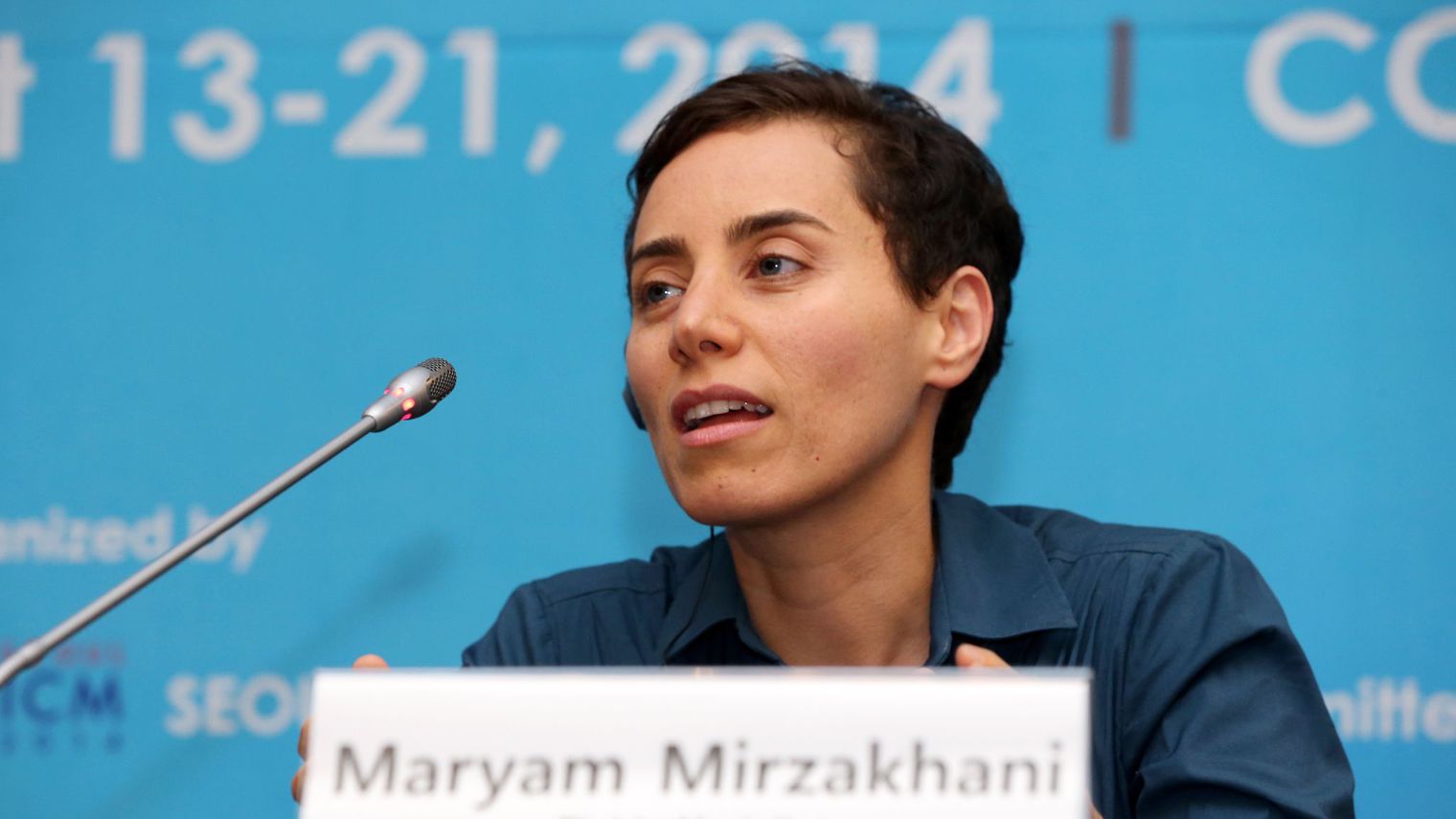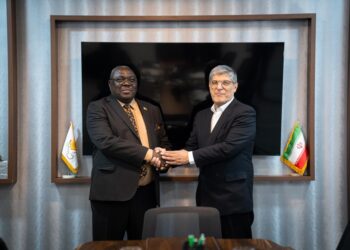In recent years, Iranian women scientists have significantly advanced science and technology through their strong and effective presence in global scientific communities. These individuals have achieved remarkable accomplishments across various fields, including mathematics, physics, engineering, and medical sciences while overcoming numerous challenges. Their successes not only demonstrate exceptional scientific capabilities but also contribute to enhancing Iran’s scientific standing on the international stage, paving the way for future generations. This report examines the activities of Iranian women scientists across multiple disciplines, highlighting their scientific publications, awards, and international collaborations, which have substantially impacted the country’s scientific dynamism and growth.
Presence in Various Fields
Iranian women scientists have made significant contributions across a diverse array of scientific disciplines. Their involvement ranges from fundamental sciences such as mathematics and physics to applied sciences like engineering and medicine. In mathematics, figures such as Maryam Mirzakhani and Shirin Ebrahimi are recognized as pioneers, having advanced the boundaries of mathematical knowledge through their research in areas like dynamical geometry and number theory (International Mathematical Union, 2024, https://shorturl.at/rbn7U). Dr. Maryam Rostami, a chemist, has developed innovative methods for nanoparticle synthesis utilizing materials and equipment available in Iran, garnering attention from the global scientific community. In recognition of the breadth of achievements by Iranian women, Dr. Nasrin Soltankhah established the Iranian Women Scientists Association, a platform dedicated to supporting and empowering women in science (National Elite Foundation, 2024, https://shorturl.at/9Ij9M).
In physics, Iranian women researchers are actively engaged in various branches, including particle physics, astrophysics, and quantum physics. Similarly, the engineering sector has witnessed significant participation from Iranian women. In disciplines such as electrical, mechanical, civil, and chemical engineering, they play a crucial role in developing new technologies. These engineers are involved in diverse projects, ranging from the design of earthquake-resistant structures to the advancement of intelligent systems and renewable energy solutions. Their innovations not only contribute to the progress of Iranian industry but have also gained attention on a global scale.
Medical sciences is another area where Iranian women scientists are at the forefront. In fields such as genetics, oncology, neurology, and immunology, Iranian women researchers have made substantial contributions. Their research in areas including novel cancer treatments, genetic studies of rare diseases, and vaccine development has led to important advancements in medical sciences (National Institutes of Health, 2020, https://shorturl.at/tE1O3). These accomplishments enhance community health and bolster Iran’s position in the global medical arena.
In computer science and information technology, Iranian women have played a crucial role in recent advancements. They are actively engaged in areas such as artificial intelligence, machine learning, cybersecurity, and bioinformatics (Tehran Times, 2023, https://shorturl.at/iq507). The research and innovations of these scientists have resulted in the development of advanced algorithms, improvements in natural language processing systems, and the creation of novel solutions in the field of big data. These achievements have found widespread application not only in academic settings but also in industry and technology-oriented businesses.
The involvement of Iranian women in environmental sciences and sustainable development is significant. Women researchers in these disciplines investigate and propose solutions for pressing environmental challenges, including climate change, air pollution, and water resource management. Their research in areas such as clean energy, sustainable agriculture, and biodiversity conservation has yielded innovative solutions to global issues. These efforts contribute to the preservation of Iran’s environment and have garnered attention in international forums, thereby enhancing global scientific collaborations in this domain.
Scientific Publications
The substantial increase in the number of scientific articles published by Iranian women in reputable international journals reflects both the quantitative and qualitative growth of their research contributions. These articles span a diverse array of disciplines, encompassing both basic and applied sciences. For instance, in the field of mathematics, the works of women scientists such as Maryam Mirzakhani, published in prestigious journals like the *Annals of Mathematics* and *Inventiones Mathematicae*, have led to significant advancements in the theory of dynamical systems and geometry (Annals of Mathematics, 2024, https://shorturl.at/QZXbE).
In the fields of life sciences and medicine, Iranian women scientists have authored numerous articles in esteemed journals such as *Nature*, *Science*, and *The Lancet*. Their contributions encompass pioneering research in areas such as gene therapy, cancer immunotherapy, and genomic studies of rare diseases. For example, Nasrin Sartipnia introduced a novel method for the early detection of pancreatic cancer with her publication in *Nature Medicine* (Nature Medicine, 2022, https://shorturl.at/AQ2ZP).
In the realms of technology and engineering, the scientific publications of Iranian women in journals such as *IEEE Transactions* and the *Journal of Applied Physics* are particularly noteworthy. These articles feature innovations across various fields, including nanotechnology, advanced materials engineering, and intelligent systems. For instance, Zahra Ahmadi presented a new method for fabricating functional nanostructures in solar cells through her article published in *Advanced Materials* (Advanced Materials, 2021, https://shorturl.at/yhFaB).
In the field of computer science and artificial intelligence, articles authored by Iranian women have garnered attention at prestigious conferences such as NIPS, ICML, and ACM SIGKDD. These publications encompass advancements in deep learning, natural language processing, and machine vision. Farinaz Koushanfar is one notable Iranian scientist in the realm of electrical and computer engineering, recognized by *Technology Review* as one of the world’s top 35 young inventors (Jacobs School, 2024, https://shorturl.at/qTN4k).
In the domain of environmental sciences and sustainable development, Iranian women scientists have contributed significant articles to journals such as *Environmental Science & Technology* and *Nature Climate Change*. Their research addresses critical issues, including water resource management, air pollution reduction, and strategies to combat climate change. Azadeh Tabazadeh is credited with the pioneering discovery of the link between increased carbon dioxide emissions from industrial products and ozone layer depletion (Azadehtabazadeh, 2024, https://shorturl.at/vwiHb).
The quantitative and qualitative increase in scientific publications by Iranian women not only enhances Iran’s global scientific standing but also facilitates greater opportunities for scientific collaboration. This trend has also resulted in a heightened presence of Iranian women on the editorial boards of reputable journals and within the scientific committees of international conferences.
Awards and International Collaborations
The attainment of prestigious international awards by Iranian women scientists underscores their exceptional scientific acumen and significant contributions to the global community. These accolades not only highlight the individual achievements of these scientists but also enhance Iran’s scientific credibility on the world stage. Such successes serve to inspire a new generation of Iranian girls and young women aspiring to pursue careers in science. Moreover, these accomplishments have attracted the attention of the international community to Iran’s scientific potential, thereby facilitating further international collaborations.
Iranian women scientists are increasingly engaging in collaborative research projects with esteemed universities and institutions across the globe. These partnerships encompass student and faculty exchanges, joint research initiatives, and the hosting of international conferences. Such international connections create new opportunities for advanced research and provide access to cutting-edge scientific resources and equipment. Furthermore, these collaborations have led to the attraction of international research funding and the generation of job opportunities for emerging Iranian scientists.
A notable achievement in this context is Maryam Mirzakhani’s receipt of the Fields Medal in 2014. Mirzakhani is celebrated as the first woman and the first Iranian to earn this prestigious award, which is regarded as equivalent to the Nobel Prize in mathematics (International Mathematical Union, 2024, https://shorturl.at/rbn7U). This accomplishment is viewed as a significant milestone not only for Iran but also for women worldwide.
In the field of computer science and artificial intelligence, Iranian women have achieved significant success. Several Iranian women have attained top rankings in international programming competitions and hackathons. One notable figure is Mona Jarrahi, who is recognized as the sole Iranian recipient among 102 candidates for the “Outstanding Young Professional Talent of the Year” award, presented by Barack Obama. She is a leading scientist and senior researcher at the School of Computer Science and Terahertz Electronics Laboratory at the University of Michigan. Terahertz technology, which occupies the spectrum between light and radio wave frequencies, has extensive applications across various sectors, including medicine, pharmaceuticals, and industry. Jarrahi’s contributions to this field have played a key role in her receipt of this prestigious award. Additionally, her accolades include the Engineering Pioneers Award from the National Academy of Engineering “Grainger” and the Young Investigators Award from the Office of Naval Research of the U.S. Defense Advanced Research Projects Agency (UCLA Samueli School of Engineering, 2024, https://shorturl.at/TsT0O).In the realm of basic sciences, the international collaborations of Iranian women are highly commendable. Azadeh Tabazadeh, who holds a Ph.D. in Physical Chemistry from Stanford University, is recognized as a leading scientist in her field. She has received numerous accolades, including the American Geophysical Union Medal in 2001 and the Presidential Award for Scientists and Engineers in 1999, which is considered the highest honor conferred by the U.S. government to distinguished researchers. Currently, Professor Tabazadeh teaches at Stanford University and is actively involved in research projects alongside her husband (Azadeh Tabazadeh, 2024, https://shorturl.at/vwiHb).
Iranian women engineers have garnered numerous medals and awards in international robotics and artificial intelligence competitions, demonstrating their expertise in advanced technology fields. In the engineering and technology sectors, Iranian women collaborate on joint projects with major technology companies and leading universities worldwide. Parisa Tabriz, recognized as a prominent figure in cybersecurity, works at Google and has earned the title “Security Princess.” Forbes magazine has featured her alongside influential figures such as Mark Zuckerberg in its list of the top 30 individuals in technology. Tabriz leads a team of 300 security experts across Europe and America, tasked with identifying and assessing security threats related to Google’s search engine and various products, including the Google Chrome browser (Parisa Tabriz, 2024, https://shorturl.at/WxTog).
In the realm of life sciences and medicine, Iranian women are significantly contributing to international collaborations. Notably, Pardis Sabeti holds the position of professor at the Center for Systems Biology and the Department of Organismic and Evolutionary Biology at Harvard University. Additionally, she serves as a professor in the Department of Immunology and Infectious Diseases at the Harvard T.H. Chan School of Public Health and conducts research at the Howard Hughes Medical Institute (Broad Institute, 2024, https://shorturl.at/PdiVs).
Conclusion
In recent years, Iranian women scientists have made significant contributions to the advancement of global science and technology, achieving notable successes across various scientific disciplines. From physics and mathematics to engineering, medicine, and computer science, these women have established themselves as pioneers in their fields by overcoming numerous challenges and attaining remarkable accomplishments.
Their achievements, which include receiving prestigious international awards, publishing influential scientific articles, and participating in advanced research projects, have not only enhanced Iran’s scientific credibility on the global stage but have also demonstrated the exceptional skills and innovative capabilities of these scientists. Their successes in mathematics, physics, engineering, and medical sciences have elevated scientific and technological standards and have made a substantial impact on the expansion of global knowledge.
Furthermore, the extensive international collaborations of these scientists with prestigious universities and institutions worldwide have created new opportunities for advanced research and access to scientific resources. These interactions have facilitated the exchange of knowledge and expertise while enhancing Iran’s scientific credibility in international forums and attracting international research funding.
Overall, the role of Iranian women scientists in global science and technology represents a significant turning point. Their achievements serve as a model for new generations of Iranian girls and women, while also contributing to the strengthening of international scientific collaborations and elevating Iran’s scientific standing on the global stage. The efforts of these women scientists clearly demonstrate Iran’s scientific capacity and potential, as well as its positive impact on global scientific progress.
References
International Mathematical Union (2024), Fields Medals 2014, Accessible at: https://shorturl.at/rbn7U
National Elite Foundation (2024), Former Heads and Directors, Accessible at: https://shorturl.at/9Ij9M
Annals of Mathematics (2024), Growth of the number of simple closed geodesics on hyperbolic surfaces, Accessible at: https://shorturl.at/QZXbE
Nature Medicine (2022), Niosomes-loaded selenium nanoparticles as a new approach for enhanced antibacterial, anti-biofilm, and anticancer activities, Accessible at: https://shorturl.at/AQ2ZP
Advanced Materials (2021), Assembly of Close-Packed Ferroelectric Polymer Nanowires via Interface-Epitaxy with ReS2, Accessible at: https://shorturl.at/yhFaB
Broadinstitute, (2024), Pardis Sabeti, M.D., D.Phil., Accessible at: https://shorturl.at/PdiVs
Parisa Tabriz (2024), Parisa Tabriz, Accessible at: https://shorturl.at/WxTog
National Institutes of Health (2020), Genetics and genomic medicine in Iran, Accessible at: https://shorturl.at/tE1O3
Tehran Times (2023), Over 130 Iranian women among world’s top 1% most-cited researchers, Accessible at: https://shorturl.at/iq507
Azadehtabazadeh (2024), Azadeh Tabazadeh, Accessible at: https://shorturl.at/vwiHb
UCLA Samueli School of Engineering (2024), Mona Jarrahi, Accessible at: https://shorturl.at/TsT0O
Jacobsschool (2024), Farinaz Koushanfar, Accessible at: https://shorturl.at/qTN4k





